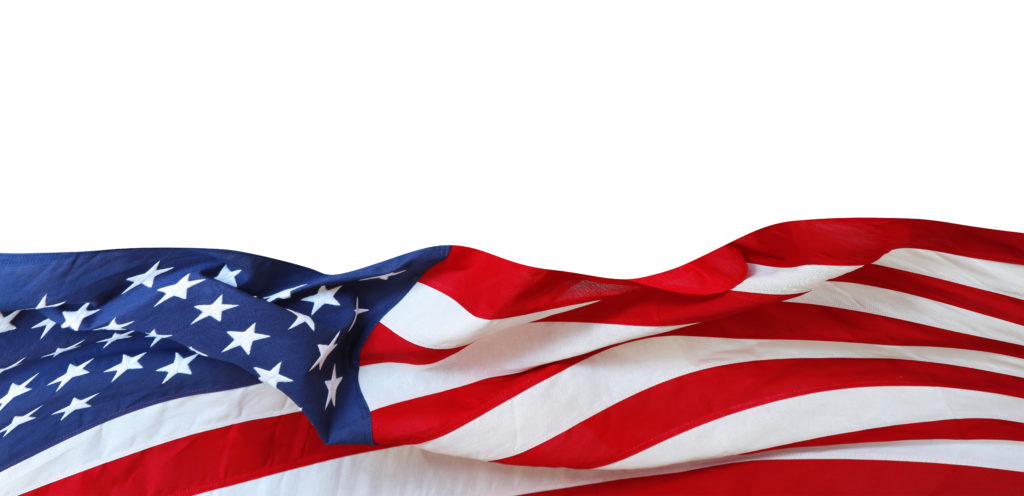Medical Device Import Process
Importing Medical Devices into the U.S.
Medical Device – Import Process
All products regulated by the Food and Drug Administration (FDA) must meet the same requirements, whether imported from abroad or produced domestically.
All medical devices imported into the United States (U.S.) must meet the regulatory requirements of both the U.S. Customs and Border Protection (CBP) and FDA. Products that do not meet FDA regulatory requirements may be detained upon entry.
Foreign manufacturers must meet applicable United States medical device regulations in order to import devices into the U.S. even if the product is authorized for marketing in another country. These requirements include:
- registration of establishment,
- listing of devices,
- manufacturing in accordance with the quality system regulation,
- medical device reporting of adverse events, and
- Premarket Notification 510(k) or Premarket Approval, if applicable.
In-Depth Coverage: Importing Medical Device
In addition, foreign manufacturers must designate a United States agent. As with domestic manufacturers, foreign manufacturing sites are subject to FDA inspection. Information on U.S. regulatory requirements can be found in the Device Advice section.
The FDA conducts field examinations and analyzes samples of medical devices to ensure they comply with applicable standards and/or label requirements.
The FDA checks the import alert database to ensure the manufacturer or product is not subject to detention without physical exam (DWPE) and listed on an import alert
The first step in any importation process begins with CBP. You must comply with CBP rules, requirements, and processes. All products offered for entry into the United States, including items for personal use, must be declared to CBP. CBP refers all FDA-regulated products to the FDA for review.
The FDA determines whether products are admissible into U.S. commerce and may refuse entry to any that violate or appear to violate any provisions of the Federal Food, Drug, and Cosmetic Act (FD&C Act). All FDA-regulated products are electronically screened before they enter the U.S. In addition to the information provided to CBP, specific information must be provided to FDA when submitting an entry, which may include documentation. Failure to submit this information may delay the review of your entry. The importer is responsible for making sure the imported products comply with all U.S. requirements.
An Introduction to FDA’s Regulation of Medical Device
The required entry information includes:
- FDA country of origin
- FDA product code, which is a combination of the FDA panel code and FDA product code
- Commercial product description: Invoice/Item Description
- Trade/Brand Name
- Government Agency Code (FDA)
- Importer of Record Name, Address
- FDA manufacturer
- FDA shipper
- Device Initial Importer Name, Address
- Delivered to Party Name, Address (Consignee)
- Point of Contact Name, Email Address
- Intended Use Code/Intended Use
- Harmonized Tariff Schedule (HTS) code for the product described in the importing documents.
- Quantity
- All Levels of Packaging (PCS must be base unit)
- Value
- FDA Facility Registration number or DUNS
- Anticipated Arrival Date and Location
- General Remarks
- Affirmation of Compliance codes and qualifiers:
The HTS code is a classification code used to provide the applicable tariff rates and statistical categories for items imported into the U.S. For questions and guidance on tariff rates, please contact your local CBP Port of Entry.
You may expedite the entry review process by submitting accurate and complete information at the time of filing and by responding to requests for additional information in a timely manner.
In-Depth Coverage: Country of Origin
- Country of Origin of Imported Merchandise
- Customs Ruling: Country of Origin
- Country of Origin: Food Products
- Country of Origin: Chemical and Pharmaceutical Products
- Country of Origin & Country of Manufacture: CBP vs. FDA
- Country of Origin: Substantial Transformation or Country of Assembly Test
- Country of Origin and Free Trade Agreement
- Country of Origin and Section 301
Initial Importers
An initial importer is any importer who furthers the marketing of a device from a foreign manufacturer to the person who makes the final delivery or sale of the device to the ultimate consumer or user but does not repackage, or otherwise change the container, wrapper, or labeling of the device or device package. The Initial Importer must have an office in the USA and is responsible for customs clearance. The initial importer of the device must register its establishment with the FDA and is subject to inspection by the FDA.
The Initial Importer must conform with the specific FDA regulations. The Initial Importer must:
- report all incidents and adverse events resulting in death or serious injury to the patient, as well as any malfunctions of the devices he imports, to the FDA;
- register, report, and archive all non-conformities, customer complaints, recalls and all post-market survey activities;
- conform with specific procedures regarding the storage, keeping, and handling of the devices he imports;
- ensure the tracking of the devices he imports.
The initial importer is an FDA requirement, whereas the importer of record is related to Customs. An Initial Importer is not an Importer of Record but could be both.
Import for Export (IFE)
An entity may import (bring into the United States) device parts, components, subassemblies, etc., for further processing or incorporation into unapproved devices which are to be subsequently exported (brought outside of the United States). IFE cannot be used for finished food products that need to be relabeled. An entity may not import a finished device that is not legally marketed in the United States, even if the device is to be imported into the United States solely for subsequent export. A finished medical device that is legally marketed in the United States has a Premarket Notification [510(k)] clearance, a De Novo granted, a Premarket Approval application approval, or is exempt. An entity may not use the “Import for Export” provision for warehousing articles in the United States.
The most common entry types used for IFE entries are Consumption entries and Temporary Importation under Bond (TIB) entries. When an IFE entry is submitted in the Automated Broker Interface (ABI) system, the customs broker (entry filer) should use the FDA affirmation of compliance code “IFE”. The code indicates to FDA that the product in some way does not comply with FDA laws and regulations, is intended to be further processed while in the US, and will be exported.
The following documentation should be submitted to FDA at the time of entry:
In-Depth Coverage: Importing Food Products
- What is FDA Food Safety Modernization Act (FSMA)?
- Prior Notice of Imported Foods
- FDA Food Facility Registration
- Risk-Based Preventive Controls for Human Food
- Risk-Based Preventive Control for Animal Food
- Protect Food against Intentional Adulteration
- What is Foreign Supplier Verification Program (FSVP)?
- What is FSMA Produce Safety Rule?
Statement of Intent
Provide a letter to FDA confirming the intent to process the product or to incorporate it into a final product. It should also state the product will be exported by the initial owner or consignee from the United States. The product must be used and exported by the initial owner or consignee in accordance with the statement of intent. Unused portions of the product must be destroyed.
Chain of Possession
Provide a statement to FDA identifying all firms that had possession of the product, including each processor, packer, distributor, or other firm that had possession of the product. This establishes a chain of possession from the manufacturer to the importer. The statement should include information sufficient to identify the chain of possession of the article through each entity, which could include information such as product coding, lot, batch, or other identification numbers. For medical devices, device history records required of domestic and foreign manufacturers.
If the above information is not submitted at the time of entry, the product may be subject to refusal of admission.
These sections of FDA’s laws and regulations allow the importation of otherwise inadmissible products for manufacturing, further processing, or incorporation and export. The law does not impose any specific limitations on how long the product may be in the U.S. before it must be further processed or incorporated into a product and exported or destroyed. CBP, however, may impose a time limitation through its bond requirements.
For further information please refer to: Import for Export Overview
In-Depth Coverage: Importing Cosmetics
Personal Importation
A personal importation is a product not for further sale or distribution into U.S. commerce. These products may be carried in baggage or shipped by courier or international mail. For medical device, a personal importation is the import of an up-to-90-day supply of a medical device not for further sale or distribution into the United States. These devices may be carried in a baggage or shipped by courier or international mail. Drop shipping is the importation of a U.S. legally marketed device for one person.
Can I purchase or bring drug or device products from a foreign country to the U.S.?
U.S. Citizens:
In most circumstances, it is illegal for individuals to import drugs or devices into the U.S. for personal use because these products purchased from other countries often have not been approved by the FDA for use and sale in the U.S. For example, a drug approved for use in another country but not approved by the FDA would be considered an unapproved drug in the U.S. and, therefore, illegal to import.
The FDA cannot ensure the safety and effectiveness of medicine purchased over the Internet from foreign sources, storefront businesses that offer to buy foreign medicine for you, or during trips outside the U.S. For these reasons, the FDA recommends only obtaining medicines from legal sources in the U.S.
Are there any circumstances when I could purchase or bring an unapproved drug or device into the U.S.?
The FDA has guidance for personal importation of drug or device products. Below provides information regarding situations for which this might be allowed:
- Product is not for treatment of a serious condition and there is no known significant health risk (Over the Counter, OTC); and
- Product is for the treatment of a serious condition ( Prescription Drug Products):
- The product is for a serious condition for which effective treatment may not be available domestically either through commercial or clinical means.
- There is no known commercialization or promotion of the product to persons residing in the U.S.
- The product does not represent an unreasonable risk.
- The consumer affirms in writing that the product is for personal use.
- The quantity is generally not more than a three month supply and either:
- Provide the name and address of the doctor licensed in the U.S. responsible for your treatment with the product, or
- Provide evidence that the product is for the continuation of a treatment begun in a foreign country.
Foreign Nationals:
A foreign national is any person who is not a citizen or permanent resident of the U.S. If you are traveling to the U.S. from a foreign country for vacation, attending university, travel for work, etc., the FDA understands that you will need to bring your personal medication while you are in the U.S.
The FDA will allow foreign nationals to bring or ship a 90-day supply of drug products. If the foreign national is staying longer than 90 days, they may have additional medication sent to them.
If you are having medication sent to you by mail or courier, it is suggested that you include documentation that provides evidence that the medication is being sent for your own use while visiting the U.S. This may include:
- A copy of the visa/passport
- Letter from doctor
- Copy of Prescription (in English)
For further information please refer to Personal Importation.
In-Depth Coverage: Customs Valuation
Affirmation of Compliance Codes for Medical Devices
Affirmation of Compliance (A of C) codes are three letter codes that can be provided at the time of import to facilitate the FDA review. The FDA uses A of C codes to assist in verifying that your product meets the appropriate requirements. Providing the correct A of C codes reduces the likelihood that your shipment will be held for further FDA entry review during the FDA’s import screening process. Submission of A of C codes is only mandatory in some instances and is not required for all scenarios.
Submitting voluntary A of C codes in addition to all mandatory A of C codes may expedite initial screening and review of your entry. For information on medical device A of C codes as well as descriptions and examples of the medical device affirmation of compliance codes, refer to the “Affirmation Of Compliance References” at the bottom of the affirmation of compliance codes page.
Examples
Device Domestic Manufacturer: DDM 3003999999
This Affirmation of Compliance Code (DDM) and qualifier (3003999999) should be the device registration number issued by FDA/CDRH for the US firm manufacturing the product identified in the FDA line. This affirmation and qualifier should be the device registration number or (owner operator number if the registration number is not yet assigned) issued by FDA/CDRH for the U.S. firm that is manufacturing the product identified in the FDA line.
Device Foreign Manufacturer Registration Number: DEV 3003999999
This Affirmation of Compliance Code (DEV) and the qualifier (3003999999) for this code should be the device registration number or (owner operator number if the registration number is not yet assigned) issued by FDA/CDRH for the foreign firm manufacturing the product identified in the FDA line.
Device Foreign Exporter Registration Number: DFE 3003999999
This Affirmation of Compliance Code (DFE) and the qualifier (3003999999) for this code should be the device registration number (or owner operator number if registration number not yet assigned) issued by FDA/CDRH for the exporter who exports or offers for export to the United States (U.S.), a device manufactured or processed by another individual, partnership, corporation or association in a foreign country, as well as devices originally manufactured in the United States.
Device Listing Number: LST E199100
This Affirmation of Compliance Code (LST) and the qualifier (E199100) for this code should be the device listing number issued by FDA/CDRH for the product identified in the FDA Line.
Device Impact Resistance Lens Certification: IRC
This Affirmation of Compliance (IRC) is used to certify that the filer has, on hand, the test results or a certificate that shows that the product on the FDA line has met the standards for impact resistance lenses. There is no qualifier for this code.
Note: FDA has the authority to ask for copies of the actual test results. Each batch within the shipment must have its own test results.
In-Depth Coverage: Marketing and Advertising Compliance
- Federal Trade Commission (FTC) Advertising Rules
- Made in USA Standard
- FTC Regulation on Environmental Claims
- Adverting and Marketing on the Internet
- Label Claims for Conventional Foods and Dietary Supplements
- Dietary Supplement Advertising: What is FTC's Truth-in-Advertising Law?
- USDA Country of Origin Labeling (COOL)
- FTC Rules & Regulations on Food Advertisement
Medical Device Establishment Registration and Drug Listing
Establishments that are involved in the production and distribution of medical devices intended for commercial distribution in the United States are required to register annually with the FDA. Most establishments that are required to register are also required to list the devices and the activities performed on those devices at that establishment. FDA Establishment Identification (FEI) number is a unique identifier issued by the FDA to track inspections of the regulated establishment or facility.
How does the FDA verify registration and listing?
When an entry is transmitted to the FDA, CBP verifies that the declared manufacturer and shipper are registered with the FDA by comparing the submitted information with CDRH’s establishment registration and listing database. CBP also uses CDRH’s data system to verify that the declared importer is registered.
Listing for the declared product is also verified by comparing the declared product description to CDRH’s establishment registration and listing database.
If the information submitted matches the CDRH establishment registration and listing database, then compliance is verified; if the information does not match, the FDA may gather additional information or may detain the product. If a firm lacks the required registration and listing, the product will be subject to refusal.
How do I obtain the manufacturer's registration and listing information?
You may search the medical device registration and listing database for registration information for any medical device firm that is registered with the FDA. When applicable, the database also includes devices listed with the FDA. In order to obtain the listing number, you will have to contact the firm that listed the device.
Medical Device Labeling
General Labeling Requirements
Labeling regulations pertaining to medical devices are found in the following Parts of Title 21 of the Code of Federal Regulations (CFR). These regulations specify the minimum requirements for all devices.
In Vitro Diagnostic Device Labeling Requirements
In vitro diagnostic products (IVD's) are those reagents, instruments, and systems intended for use in the diagnosis of a disease or other conditions, including a determination of the state of health, in order to cure, mitigate, treat, or prevent disease or its sequelae. Such products are intended for use in the collection, preparation, and examination of specimens taken from the human body.
Labeling Requirements for Radiation Emitting Devices and Products
Labeling of radiation-emitting products applies to all products which emit sonic, infrasonic, or ultrasonic radiation as the result of the operation of an electronic circuit. It thus applies to medical devices that emit sonic, infrasonic, or ultrasonic radiation as the result of the operation of an electronic circuit in addition to the general labeling requirements for medical devices. Radiation-emitting devices include electronic products that emit radiation either by design (e.g., X-ray equipment) or as a consequence of operation (e.g., television set), but exclude products that emit radiation as a result of the decay of a radioactive element or isotope (e.g., an ionization type smoke detector).
In-Depth Coverage: USDA-Regulated Products
- Importing USDA-Regulated Food Products
- Import Regulation by USDA Agricultural Marketing Service (AMS)
- Food Products – FDA or USDA Regulated
- Country of Origin Labeling
- Importing Animals, Animal Products, and Biologics into the US
- Importing Meat, Poultry, and Egg Products into the US
- Labeling and Marking of Imported Meat, Poultry, and Egg Products
- USDA National Organic Program (NOP)
- Agricultural Safeguards and USDA Licensing
Medical Device Common Entry Errors
To expedite entry screening of medical device products by the Predictive Risk-based Evaluation for Dynamic Import Compliance Targeting (PREDICT) system, importers and entry filers must provide accurate product codes, all relevant affirmations of compliance (AofC) and accurate identifiers for firms, in addition to the general entry data.
When applicable entry data is supplied electronically, completely and accurately, it can be used by the PREDICT system to “look-up” the information in the FDA’s databases, validate the information, and issue a system May Proceed if the line is not held due to any other screening criteria. When this additional entry information is not provided, or if it is provided incorrectly, the automated look-up will fail and the entry line may be subject to delays in processing.
The five most common errors listed below make more than 70% of errors for medical device entries from 7/1/19 – 9/30/19
1. DEV/DFE did not match firms (27%)
The DEV and/or DFE transmitted on the line did not match the firms transmitted.
Verify that the registration information (DEV and/or DFE) transmitted match the manufacturer and shipper transmitted on the line.
When supplying manufacturer information through the Automated Commercial Environment (ACE), only firm name and address are required to be submitted; however, if an FEI number is also provided, that can improve the chances that the firm name and address matches the registration number provided.
To find the FEI for a registered firm, search the firm’s registration number on the Search Registration and Listing Database; the FEI Number is located on the registration record.
2. DFE number is not valid (15%)
The DFE transmitted does not match a valid non-US firm in the FDA's internal database.
Verify the DFE provided is accurate.
3. Product Code does not match (10%)
The product code transmitted for the entry did not match the product code on the LST transmitted.
Verify that the correct LST was provided and/or that the product code matches the LST.
4. Registration does not match (10%)
The registration number provided in the entry did not match the registration number on the transmitted LST.
Verify the DEV provided matches the LST provided.
5. DEV number is not valid (9%)
The DEV transmitted does not match a valid non-US firm in the FDA's internal database.
Verify the DEV provided is accurate.
Customs Clearance and Import Requirements
- Entry of Imported Merchandise
- What is Section 321 Entry?
- What is Automated Commercial Environment (ACE)
- What is an Automated Broker Interface (ABI)?
- Who is Ultimate Consignee?
- What is Non-Resident Importer Program?
- Country of Origin of Imported Merchandise
- What is the Country of Assembly?
- What if the FDA's Country of Manufacture?
- Marking of Country of Origin on U.S. Imports
- What is Customs Bond?
- Reconciliation Prototype and Bond Rider
- Who Needs a Customs Broker?
- What is Customs Ruling Program?
- Classification of Imported Goods
- How is imported merchandise appraised?
- What are Import Quotas?
- What are Trade Remedy Duties?
- Antidumping Duty (AD) and Countervailing Duty (CVD)
- What is Foreign Trade Zone (FTZ)?
- What is Importer Security Filing (ISF)?
- What is Temporary Importation under Bond (TIB)
- What is In-Bond Process?
FDA-Regulated Products and Import Requirements
- What is Food Safety Modernization Act (FSMA)?
- Prior Notice of Imported Foods
- Food Facility Registration
- Risk-Based Preventive Controls for Human Food
- Risk-Based Preventive Control for Animal Food
- Standards for the Growing, Harvesting, Packing, and Holding of Produce for Human Consumption
- What is Foreign Supplier Verification Program (FSVP)?
- Protect Food against Intentional Adulteration
- FDA Regulated Product in Foreign Trade Zone (FTZ)
- Entry Review Process for FDA Regulated Products
- Country of Origin VS Country of Manufacture
- Foods Regulated by FDA or USDA: What is the Difference?
- Label and Labeling Claims for Conventional Food and Dietary Supplements
- What is USDA Country of Origin Labeling (COOL)?
- Import for Export of FDA Regulated Products
- FDA Regulated Products in Personal Baggage or Sending by Mail or Courier
- International Mail Facility (IMF) and FDA Regulation
- Importing Biological Product Regulated by CBER
- Importing Cosmetics and Voluntary Cosmetic Registration Program (VCRP)
- Importing Drugs into the U.S.
- Importing OTC Drugs into the U.S.
- Importing Veterinary Drugs into the U.S.
- Importing Tobacco Products into the U.S.
- Importing Medical Devices into the U.S
- Importing Food Products into he U.S.
- Importing Radiation-Emitting Products into the U.S.







